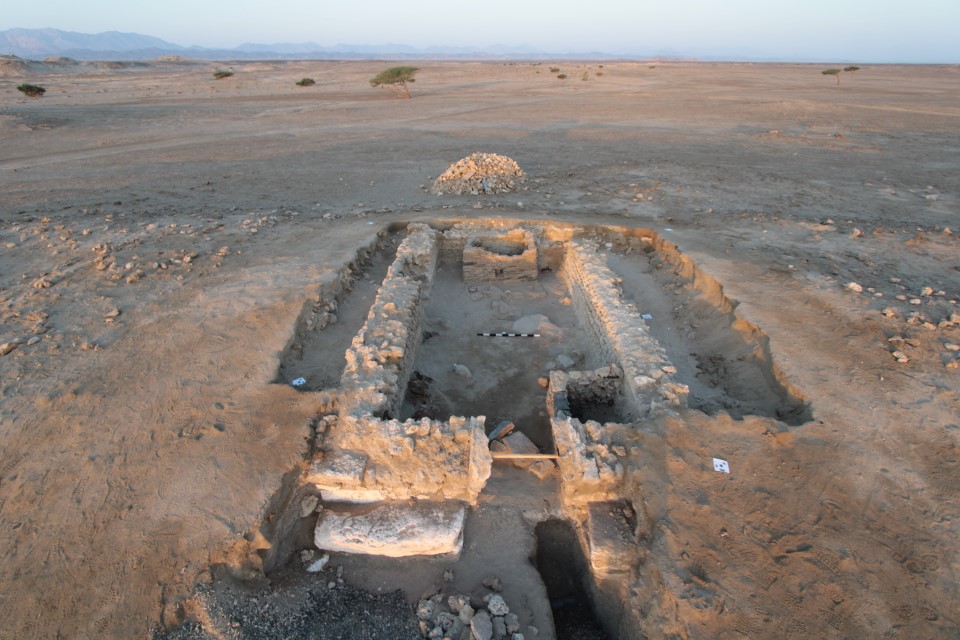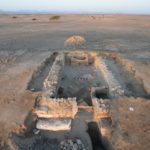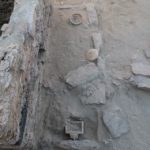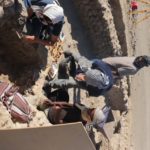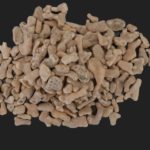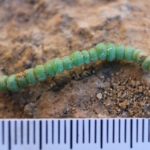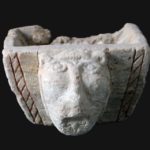Results of the latest excavation season in Berenike, Egypt, have been announced. Among their highlights is a tomb with coral walls and floors and intact burials with rich grave goods excavated by a team from the Polish Centre of Mediterranean Archaeology.
Berenike is located in the Eastern Desert, on the Red Sea coast. This port city, founded in the 3rd century BCE by Ptolemy II, has been explored by a Polish-American expedition from the Polish Centre of Mediterranean Archaeology at the University of Warsaw and the University of Delaware since 2008.
– “This new discovery is the first such an explicit example of social differentiation in a very poorly recognized phase of the city’s occupation, that is in the 4th–5th centuries CE. The equipment and the form of the burials are unique in the whole of eastern Egypt,” says expedition co-director Dr. Mariusz Gwiazda of PCMA UW.
The goal of the Polish team’s current work at the necropolis is to study the community living in the Eastern Desert after the Roman period (4th–6th century CE). Researchers are interested in the diversity of burial customs, and are also planning paleoanthropological analyses In this period, Berenike was ruled by the Blemmies, a nomadic people inhabiting the Eastern Desert from the present-day Egyptian-Sudanese border to Ethiopia. Although Berenike was no longer under Roman control at that time, the lucrative long-distance trade that contributed to the establishment and growth of the port still continued. Its routes connected the Indian Ocean, East Africa, and Byzantium. Previous research has focused on the origins of the city and the Roman period. This work is being continued by a team led by Professor Steven E. Sidebotham.
The investigated tomb is one of several similar above-ground structures built on a hill near the main road to the city. It is a rectangular room, almost 5 m long. The floor made of selected, smooth, white corals is a remarkable feature. Another type of coral mixed with mud was used to plaster the walls.
Inside the tomb, communal burials and associated rich equipment were discovered. The latter included over 700 beads, with some specimens imported from southern Asia, several silver rings and earrings, and ivory bracelets. Remains associated with burial rites were also encountered, including wine amphorae and ceramic water bottles. Further elements of these rituals were offerings in incense burners and bowls. The most impressive of such censers, made of stone, had a decoration in the form of a lion’s head. The burials themselves were placed in stone boxes constructed by the walls of the tomb. The bodies were laid in a closely contracted position and were presumably tied up to save space.
– “The use of plaster with corals as a building material is unique in the architecture of this period and was recorded for the first time at Berenike,” – notes the archaeologist. He also points out that the selection of suitable coral fragments must have been time-consuming, which must have been reflected in a high cost of constructing the tomb. – “This, in turn, indicates that the structure was intended for people of high social status, most likely members of the local elite,” adds Dr. Gwiazda.
The discovery opens a new chapter in the study of burial customs of Eastern Desert inhabitants and population diversity of the region at the end of antiquity.
The research at Berenike is conducted in collaboration with the Egyptian Ministry of Tourism and Antiquities, with the support of its Quseir branch.
Read more about the research at Berenike.
-
Monumental tomb discovered in Berenike in the season of 2021/22 // Monumentalny grobowiec z Berenike odkryty w sezonie 2021/22 (fot. M. Gwiazda/ PCMA UW)
-
Deposit of funerary ritual objects from the tomb in Berenike // Depozyt obiektów związanych z rytuałami grzebalnymi (fot. M. Gwiazda / PCMA UW)
-
Excavations in the tomb // Wykopaliska w grobowcu (fot. M. Gwiazda / PCMA UW)
-
White corals used in the floor construction //Białe koralowce z których wykonano podłogę grobowca (fot. M. Gwiazda / PCMA UW)
-
Glass beads still strung on a thread, found in the tomb in Berenike // Szklane paciorki nanizane na nić odkryte w monumentalnym grobowcu (fot. M. Gwiazda / PCMA UW)
-
A stone incense burner adorned with a lion’s head // Kamienna kadzielnica z rzeźbionym przedstawieniem głowy lwa (fot. F. Mydlak / PCMA UW)

